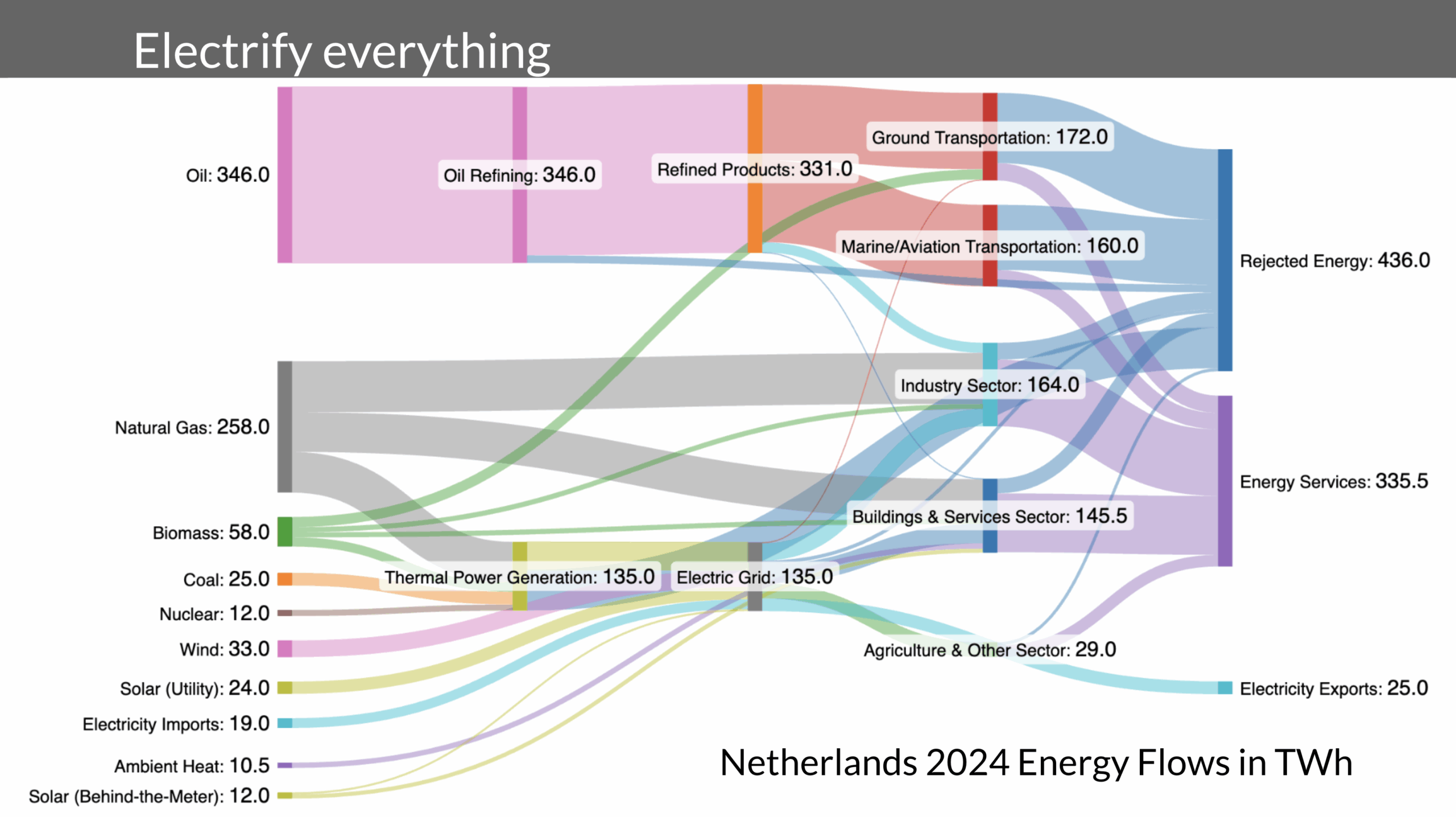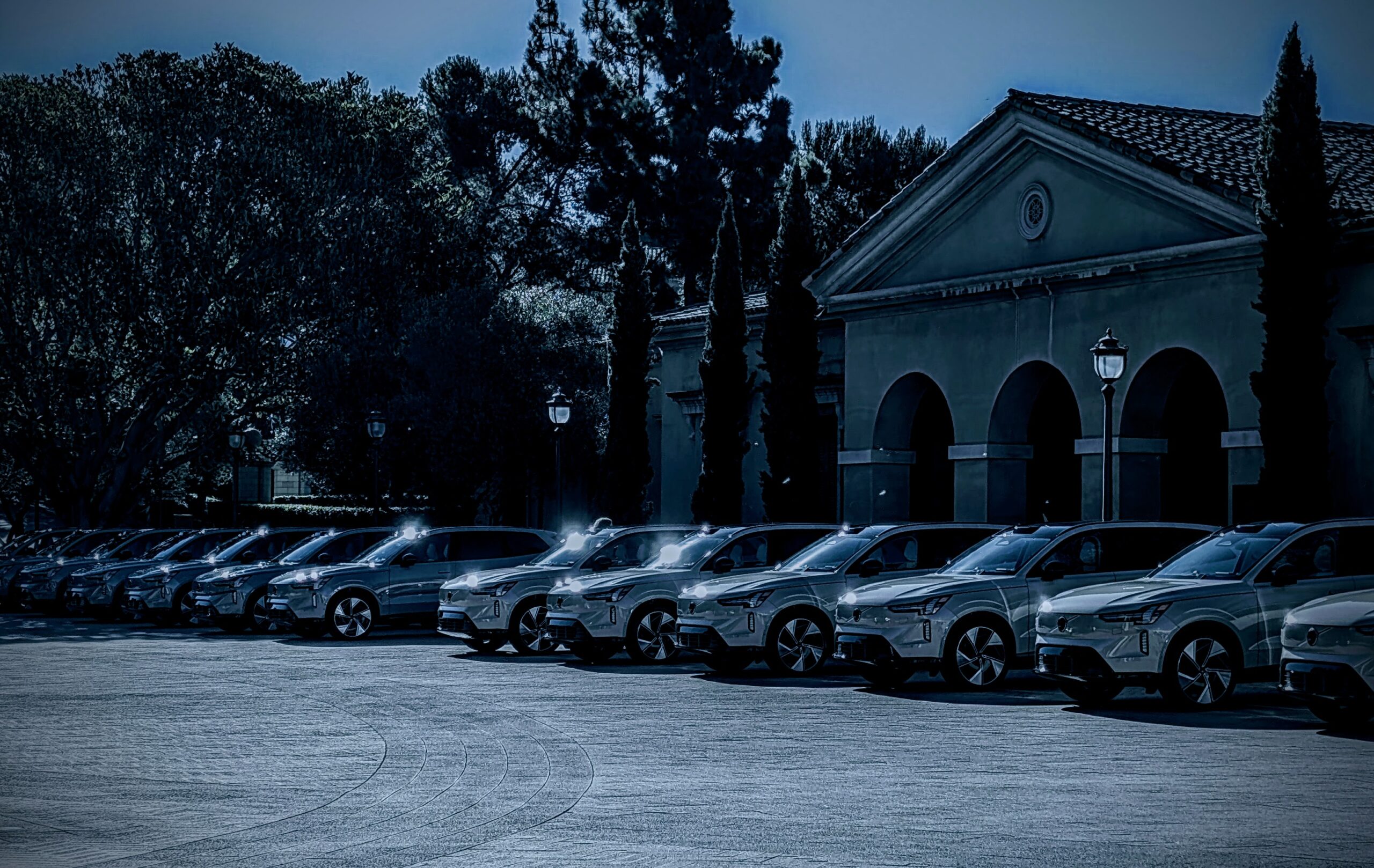Sign up for daily news updates from CleanTechnica on email. Or follow us on Google News!
This week I had the privilege of speaking in Brussels, steps from the European Parliament, among a group of speakers that included the Belgian energy minister and a member of European parliament, then participating in a panel discussion. The event was a launch of the second edition of Supergrid Super Solution: A Handbook for Energy Independence and a Europe Free from Fossil Fuels, available soon through all major book outlets.
The first edition was authored by the late Eddie O’Connor, a giant in renewables in Europe, and Kevin O’Sullivan. Eddie founded Airtricity, built the first and only offshore wind farm in Ireland, built renewables around the world, and exited, selling it for €2.8 billion. Not satisfied with that, he founded Mainstream Renewables, built renewables around the world, and exited, selling it for over a billion euros. Kevin has been editor overall and most especially of the environment and science beat for the Irish Times.
The diagnosis the book makes is a familiar and accurate one, that true decarbonization requires us to electrify everything and build lots of renewables, transmission and storage to move electrons from where there are too many to where there are too few, regardless of where those points are. But while it goes into where the electrons will be coming from, its primary focus is how they will be getting to where they are needed.
Eddie formed the thesis of a mesh direct current supergrid overlying Europe’s existing and transmission and distribution grids in the early 2000s, and pushed for this vision and the technology required to achieve it for a quarter of a century. The second edition has been transformed even more into a handbook for what Europe needs to do to achieve it, why it’s so critically important to European global competitiveness, and why it’s so essential for Europe’s renewable resource rich edge states to be first in fulfilling the energy demands of the industrialized, heavily populated and affluent center.
Eddie passed in January of this year, his plans for the book as an agent for change in Europe unfulfilled.
They give birth astride of a grave, the light gleams an instant, then it’s night once more.
– Samuel Beckett
The torch passed to his daughter, Lesley, who was a global executive in Mainstream Renewables, building multibillion dollar renewables farms, including living in Chile, a particular focus of development. Lesley remains a Board member of Mainstream Renewables, as the family retains a stake.
A few months ago, Lesley reached out to me to ask me to help with, among other things, the second edition of the book. I assisted with framing the European grid and its trajectory against global economic competitors, especially India and China.
The launch was in Brussels and at an auspicious time. Why auspicious? Because on May 30th, 2024, the 27-member state energy ministers that make up the Transport, Telecommunications and Energy Council of the European Union agreed to the following:
- UNDERLINES the need for a holistic, long-term, coordinated, improved and integrated electricity grid infrastructure planning at European level, covering both a 10-year and a 20-year horizon, taking into account national and European decarbonisation targets, and considers both offshore and onshore projects, including hybrid ones
That was one of the key clauses in the material. One of the reasons Lesley asked for my assistance was because I made the bold prediction at the end of 2023 that in 2024, “The EU will formally create an EU HVDC and HVAC grid and interconnect planning and funding agency with a mandate for continent+ scale interconnection.” Partial marks at best, but still.
And so, to the event. I spoke last, following a tremendous group. Suzanne Lynch, Brussels-based associate editor of Politico, introduced the evening and ran the spicy panel discussion.
Lesley O’Connor spoke of the passing of the torch from Eddie to her and the team she assembled, spoke about the shape of the supergrid, and framed how essential an electrified Europe united by transmission is to global competitiveness.
Belgian Energy Minister Tinne Van der Straeten spoke about the need for a transmission grid capable of allowing renewables to decarbonize Europe, saying, “A supergrid will not only unlock access to renewable energy, but also ensure a more secure and stable energy supply across the continent.”
Member of European Parliament Barry Andrews reinforced these themes, and spoke of his long-running interactions with Eddie.
The Chair of CurrENT Europe, the industry association for innovative grid technology firms on the continent, Christian Kjaer, who is also with superconducting transmission firm Supernode, spoke on the opportunities in the market for advanced technologies that Europe could develop, implement, and export globally.
Kevin O’Connor, co-author and Irish Times editor, spoke of Eddie’s decades-long vision and efforts toward Europe united by a supergrid.
And finally, my remarks, building on the theme of competitiveness Lesley and Barry had introduced. What follows is a written version of the remarks I made, not the verbatim transcript.
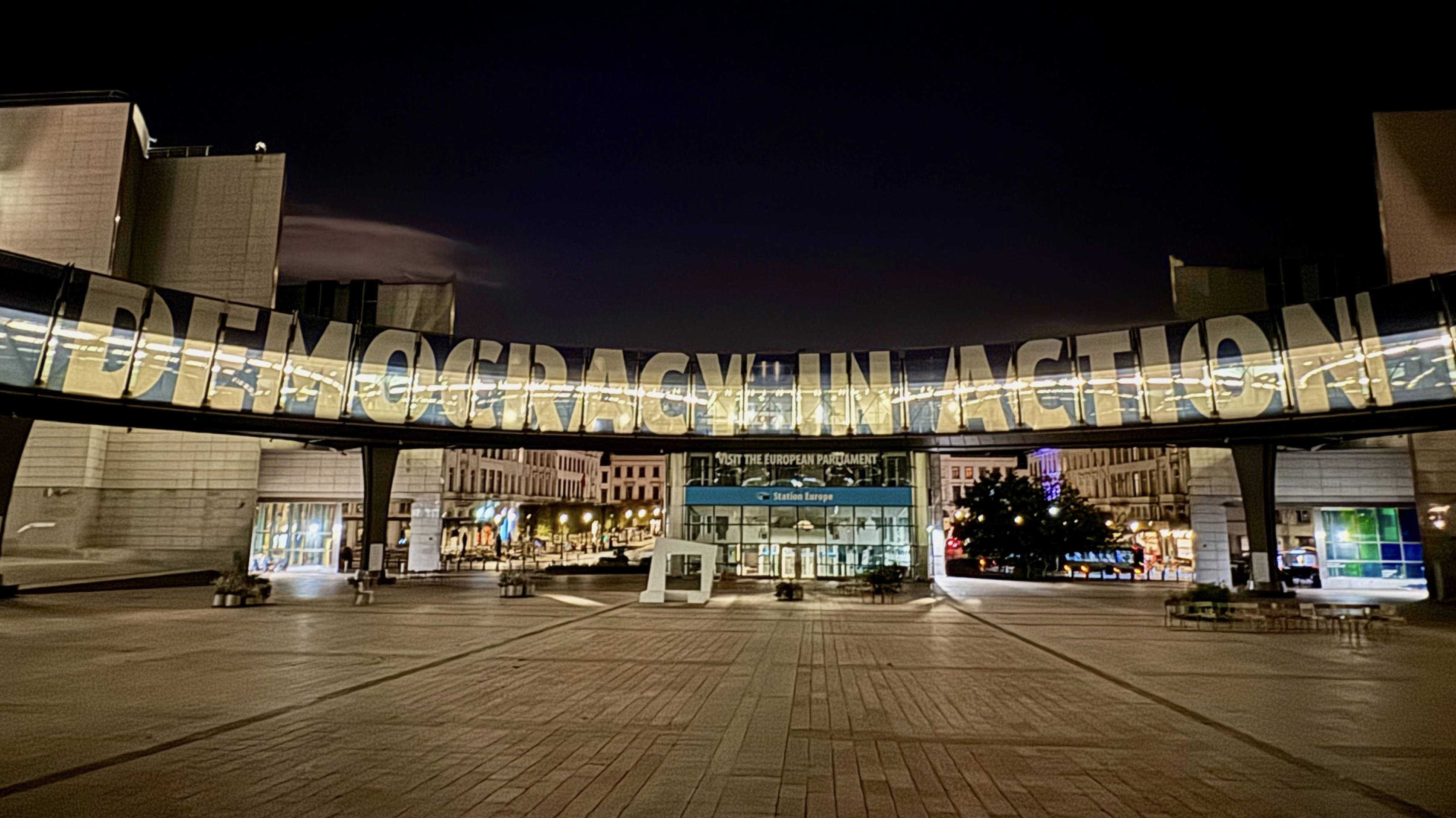
Sunday was my first day in Brussels as an adult. I walked 24 kilometers around its beautiful streets and parks, and included in that was a pilgrimage to the European Parliament. Democracy In Action is what people see when they leave the main entrance to the Parliament.
Why a pilgrimage? Because as I do my analyses of major economic and geographic blocs around the world and their climate trajectories, Europe has led for decades. It was the most electrified. It was the only continent that reduced its carbon dioxide emissions.
It’s now putting a carbon price on the world through its carbon border adjustment mechanism. When considered as a trading bloc, Europe is the second biggest economy in the world, importing and exporting a vast amount of goods and services. The border adjustment puts a carbon price on imports.
And the world is paying attention. Two years ago, when I spoke to Chinese business executives at the Tsinghua University People’s Bank of China School of Finance in Beijing on the subject of the geopolitics of European decarbonization plans, the first question was whether the carbon border adjustment mechanism would make it impossible for Chinese firms to compete in Europe.
My answer was that it wouldn’t. The combination of China’s 40% purchasing power parity advantage and the Wright’s Law advantages their huge domestic market and far-sighted industrial policies have given them mean that they will still be able to sell products for a profit in Europe at a price domestic manufacturers can’t match. Only onerous tariffs on top of the border adjustment would make Chinese wind turbines, solar panels, and electric vehicles uncompetitive.
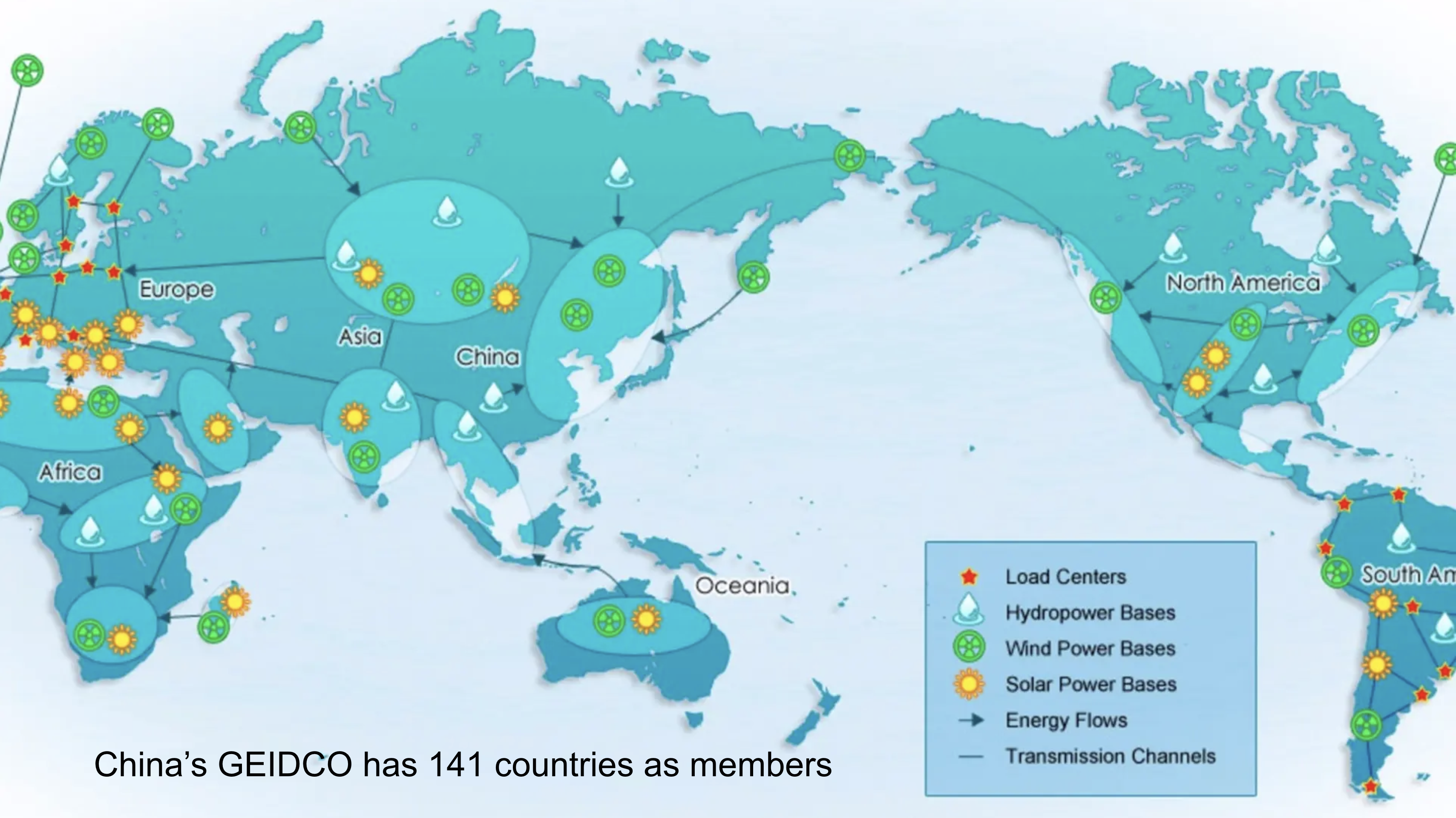
China has built more transmission of every kind in the past 40 years than the rest of the world combined. It has more HVDC transmission than the rest of the world combined.
Lesley and others spoke of the challenges of renewables curtailment being experienced across Europe due to grid congestion, citing 15% to 30% losses of useful electricity. Headlines were made in the middle of this year as China approached 5% curtailment of its renewables. Despite building more wind and solar than the rest of the world combined in recent years, China is not suffering significant curtailment because it also built massive amounts of transmission, especially HVDC, to move electrons from high-renewables regions to high-demand regions. There are 20 more HVDC lines under construction today.
In 2016, China established the EU-affiliated non-governmental organization, the Global Energy Interconnection and Development Cooperation Organization. Premier Xi spoke at the launch as a sponsor of the initiative. The head of China’s national grid has been the executive chair of the organization since its inception. At present, 141 countries and almost a thousand organizations are members of GEIDCO.
The map is a global supergrid visualized by GEIDCO. It presents a vision of world interconnected by high voltage, direct current interconnectors.
Some of these are already being realized. The 4,200 km Sun Cable link between Australia and Singapore received initial approvals from Singapore in the last two weeks, another step in bringing solar energy from the sun-drenched open spaces in northern Australia into the emerging ASEAN grid.
I’m peripherally involved with the NATO-L project, a 3,600-kilometer 6 GW interconnector between Europe and North America, envisioned and being developed by Laurent Segalen, who was key to creating the Scope 1, 2, and 3 emissions definitions, a cleantech investor, and host of the top ranked energy transition podcast, Redefining Energy.
There are interconnectors between Europe and Georgia, and Tunisia and Israel in various stages of development and construction.
A couple of years ago, GEIDCO was instrumental in a joint African-Chinese study of a 12 country HVDC super connector stretching from western sub-Saharan Africa across to Kenya, and then down to South Africa. European simulation software was used for the study to add generation and storage along the length to optimize its outputs as it was the best available at the time. And it was inadequate. The researchers had to kludge it in many ways to approximate their findings, as no grid simulation software exists that addresses continent-scale grids yet, a clear deficiency.
GEIDCO overlaps substantially with the member countries of the Belt & Road Initiative. It isn’t just an NGO. What it conceives of is being built in places under the BRI, and the sub-Saharan 12-country transmission corridor has a very good chance of seeing the light of day.
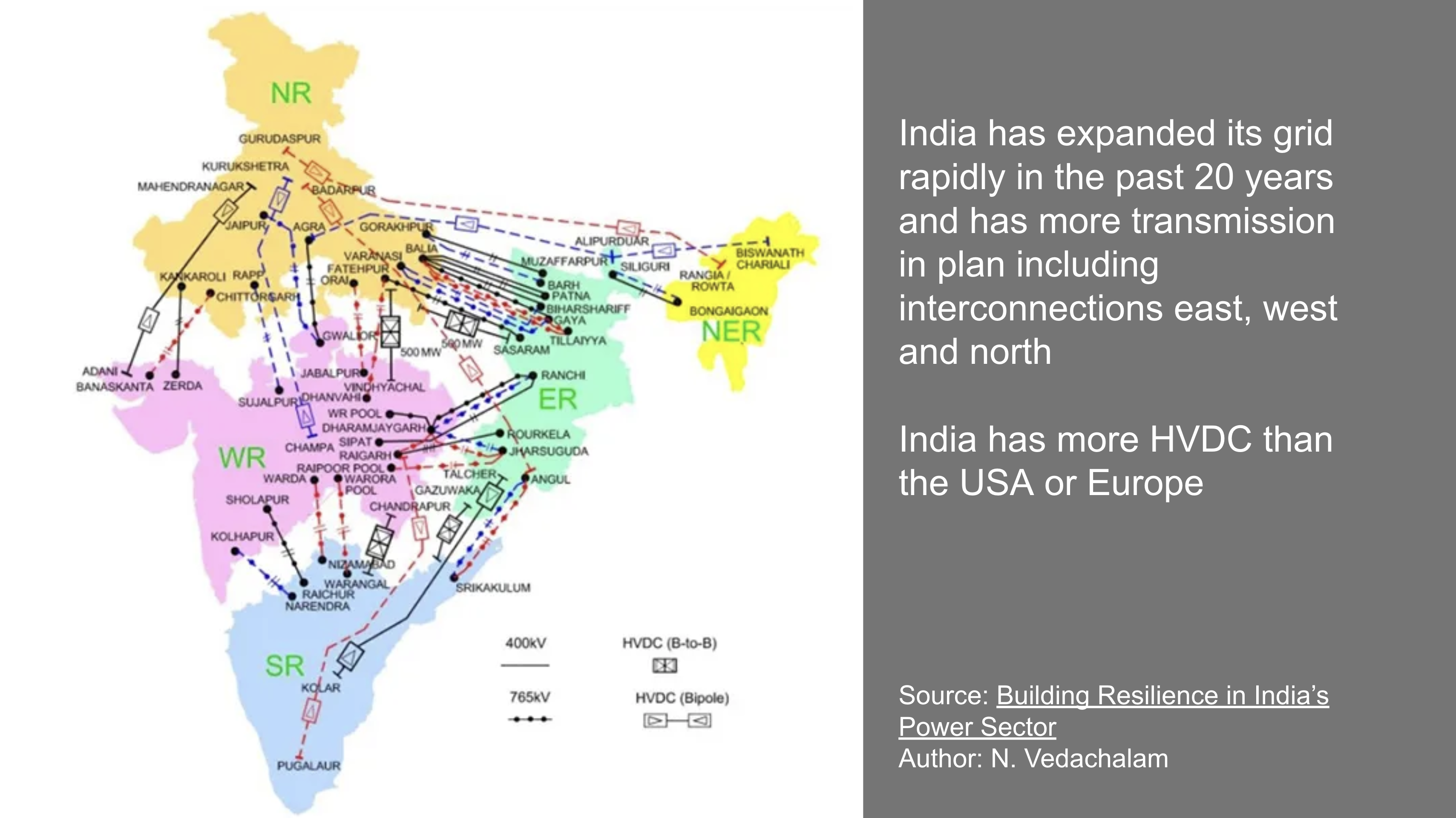
One of the things I’ve had the privilege of doing in the past year is a seminar series for India’s electrical utility professionals, framed around my short list of climate actions that will work. Over the course of six months I delivered around 14 seminars on the various aspects of the short list. This was fortuitous, as while I’ve been a close watcher of China for the past decade, I hadn’t paid as much attention to India.
Like China, India is not suffering significant renewables curtailment. That’s because it has built a massive transmission line from the biggest area where new solar was going to exist to the high-demand New Delhi region and has been filling up the capacity since.
The country has built more HVDC than exists in either the USA or Europe as it makes its grid more resilient and builds interconnectors north, east, and west, including to Africa. It’s planning to connect the emerging ASEAN grid and hence to China’s grid.

I was introduced earlier as a climate futurist, a pretentious title I’ve accreted recently, and this projection is an example of why. I started the material a couple of months ago, and just finished the first iteration yesterday morning in preparation for this discussion. I live by post-publication humiliation, and this material has never been published, so you have the first opportunity to humiliate me.
As other speakers such as Tinne have said, an electrified economy is a competitive economy. I consider the ratio of energy in the form of electricity to the total energy in an economy to be a key metric of decarbonization and competitiveness.
The green line at the top in 1990 is Europe, with a bit over 20% of energy in the form of electricity. The blue line is the USA, well below that.
Tipping points are an overused trope, but it applies to China’s electrification.
I want to call your attention to the white line, China’s line. In 1990, it had the lowest ratio of energy being electricity among the four major economic blocs. In the ensuing decades it had the steepest climb in this key metric, and recently passed Europe.
You’ll notice the line goes up steeply from now on, only starting to level out again in the 2040s. That’s because China has electrified far more of the parts of the economy that will persist past its current infrastructure boom than other countries and is building far more renewables than the rest of the world combined.
The most efficient and lowest carbon energy is from wind turbines or solar panels to electrified energy services.
The trajectories of the Europe and America, despite decades of knowing that only electrification is the path to decarbonization, are relatively flat, and there’s little evidence that they are accelerating nearly fast enough.

In the coming decades, the energy demand of major economic blocs will change substantially. China’s massive energy requirements today will decline radically.
That’s structural. The big hump in demand was because China built 500 cities in the past 40 years. It built 177,000 kilometers of highways. It built 46,000 kilometers of high-speed, electrified rail. It built the biggest ports in the world. It build more transmission, wind, solar, and hydroelectric facilities than the rest of the world combined.
But it’s mostly done now. It has enough cities to house its 1.4 billion citizens. It has the ports and railways.
Europe and North America don’t show that bulge because it occurred before 1990, in the middle decades of the century. China’s energy demand decline was experienced by the developed world decades ago, and it’s entering the lower-energy replacement and maintenance stage
India’s infrastructure bulge is happening later, but it won’t be as big as China’s and it is leading the world in calcined clay cement and electrified rail, among other things.
China’s numbers mean that all of the coal used to manufacture the billions of tons of steel and cement that have gone into its infrastructure is not going to be burned. China stopped permitting new coal-fired steel plants this year, pivoting instead to more electric arc furnaces. China produced 260-280 million tons of scrap steel in 2023, and produces about 30% of its steel demand from scrap steel. That’s going to climb to US levels of 70% over the coming couple of decades, especially as steel demand for infrastructure plummets.
Meanwhile, Europe only produces 30% of its steel with electric arc furnaces and exports 20 million tons of scrap a year.
The massive renewables deployment is paying off. Last quarter, China’s electricity demand spiked as heat waves hit major parts of the country, causing air conditioning demand to skyrocket. Hydroelectric is up since the lows last year that resulted in burning lots of coal, but has not yet returned to normal. Yet emissions did not spike with air conditioning demand. China put in so much solar this year alone that the 1.4 billion people all turning on their air conditioning resulted in all of the solar electrons being sucked into heat pumps, and the amount of coal being burnt not increasing.
This isn’t the new normal, it’s the beginning of plummeting fossil fuel demand and a radical increase in renewables to electrified energy services in the country. Meanwhile, Europe hasn’t moved the needle that much since 1990 on this key metric.
The economic bloc that wins the competition for the future is the electrified one run by renewables. Which economy is that going to be, according to current trends?
It’s time for Europe to put the act back in action. The economy that’s dawdling toward the finish line may be moving, but winner will be the economy sprinting toward it.
There was a Q&A session following the presentations. While I didn’t capture most questions and answers, it’s worth considering the following. Suzanne asked a series of questions related to the theme of how Europe was going to pay for it all. Most of the panel answered it in various ways, attempting to color within the box.
I had the opportunity speak truth to power, so I offered a modest proposal. I suggested that they could unlock a lot of EU capital simply by stopping wasting time, intellectual horsepower, and money on hydrogen for energy and carbon capture and sequestration.

Chip in a few dollars a month to help support independent cleantech coverage that helps to accelerate the cleantech revolution!
Have a tip for CleanTechnica? Want to advertise? Want to suggest a guest for our CleanTech Talk podcast? Contact us here.
Sign up for our daily newsletter for 15 new cleantech stories a day. Or sign up for our weekly one if daily is too frequent.
CleanTechnica uses affiliate links. See our policy here.
CleanTechnica’s Comment Policy


